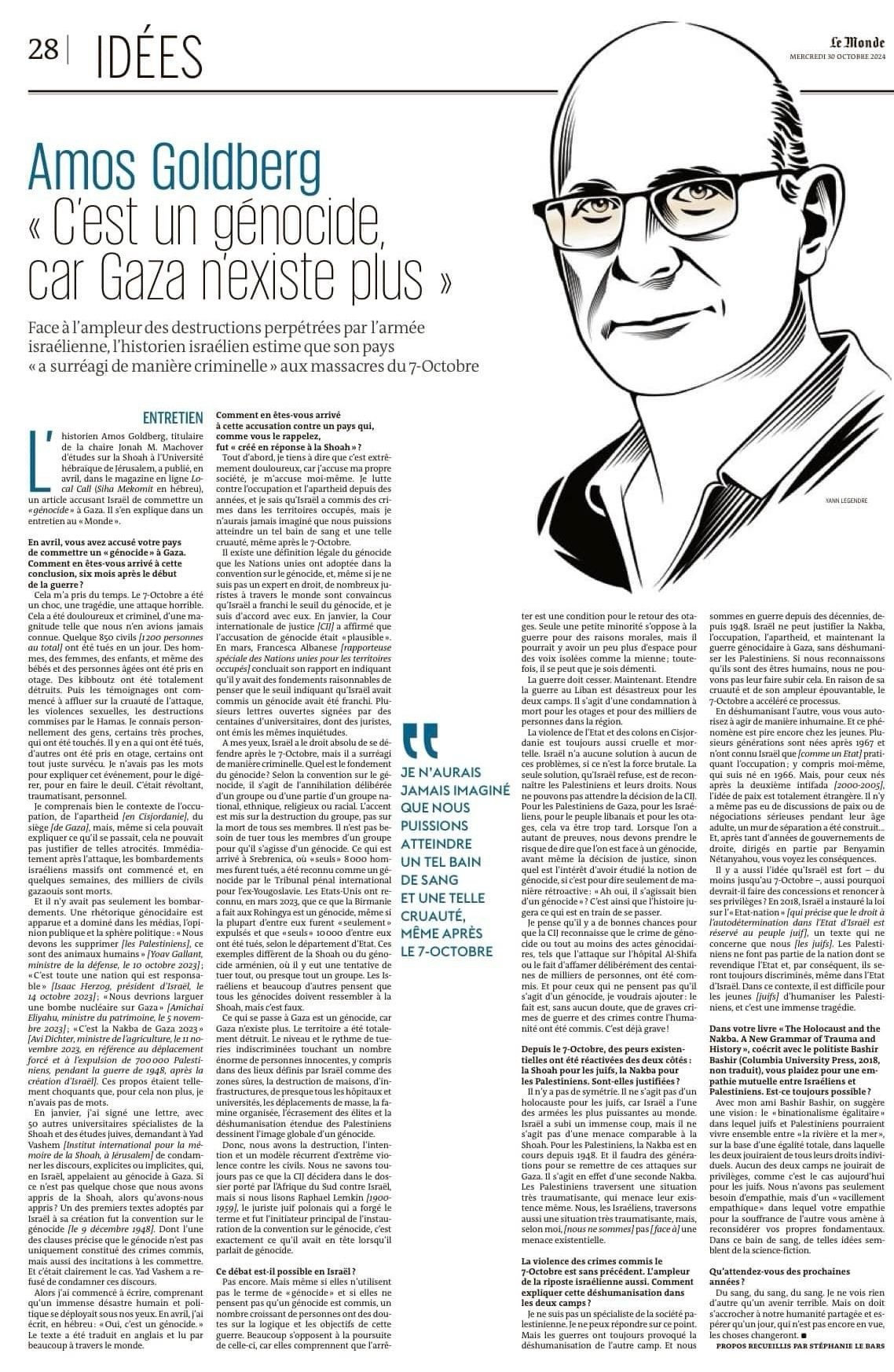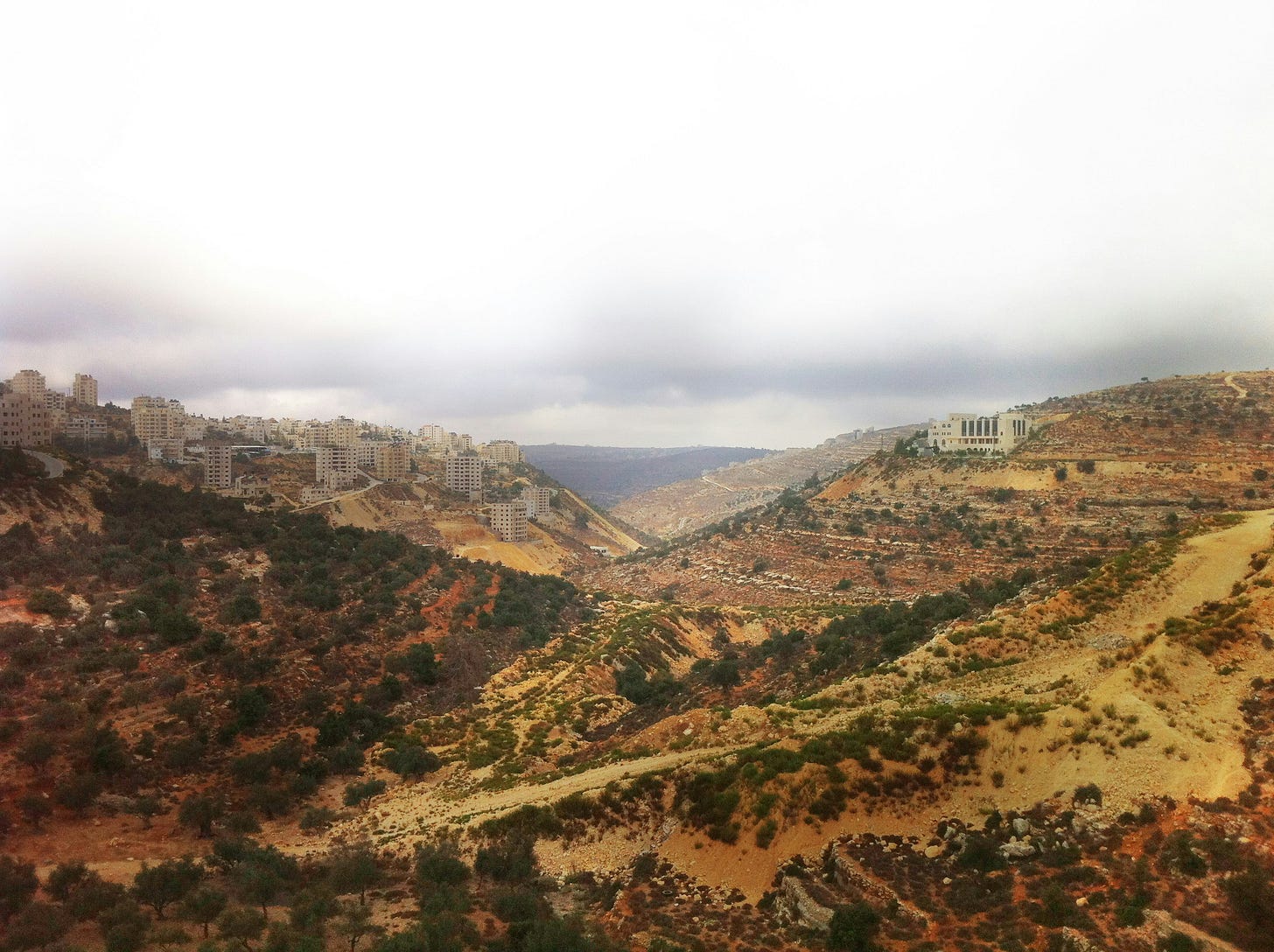Why people tend to ignore genocides, with Raphael Lemkin and Amos Goldberg
Beneath the surface, there may be another fear at play.
Friends—
the World Food Programme warns that Gaza’s humanitarian crisis “could soon escalate into famine,” as winter approaches and Israeli troops continue to restrict food and other essential supplies from entering the area. Israeli forces attacked the Kamal Adwan Hospital in northern Gaza, severely wounding a child and damaging its nursery. A drone fired on the gates and walls of the nearby Indonesian Hospital.
Since the start of Israel’s war on Gaza, more than 44,000 Palestinians have been killed, including almost 17,000 children. According to the United Nations Office for the Coordination of Humanitarian Affairs, the World Health Organization, and the Palestinian government, Israel has destroyed over half of Gaza's homes, 80% of school buildings, and two-thirds of its arable land.
Genocide is a delicate and profoundly troubling term due to the immense horrors and atrocities it signifies. Many believe that if we were to refer to mass killings as genocide too quickly, the term would lose meaning, and we would never be capable of fighting the unthinkable again.
However, beneath the surface, there may be another fear at play. Throughout history, humanity has repeatedly attempted to eradicate entire populations. The repulsion of this reality is so profound that we tend to ignore it rather than confront it.
The horror obscures our understanding that it has occurred repeatedly throughout history and continues to happen. Raphael Lemkin learned this lesson early in his life, which is why I want to talk about him today.
Carthage
Lemkin was a boy when he read how the Romans sacked the city of Carthage and slaughtered 62,000 of the 112,000 people present. Those who were lucky enough to stay alive were taken and sold as slaves. Lemkin read about Mongol hoards invading Europe, killing half of the Hungarian population. He read about how, in France, thousands of Protestants were killed over just a few days in a brutal effort to crush any challenge to Catholic power.
Lemkin was aware of antisemitic pogroms, but could he truly grasp how the mass killings and attempts to annihilate entire populations would echo throughout his own time?
Could he truly grasp how the mass killings and attempts to annihilate entire populations would echo throughout his own time?
Born in the year 1900, Raphael Lemkin grew up on a large farm near Wolkowysk in present-day Belarus. His father was a farmer, and his mother—a painter, linguist, and philosophy student—was known for her intellect, homeschooling Lemkin and his two brothers, Eliasz and Samuel.
Perplexed
While studying law, Lemkin read how the Ottomans nearly wiped out the Armenian Christian population in Anatolia, killing at least 664,000 people within a few months. Some reports estimated the toll as high as 1.2 million, with Armenians perishing in massacres, targeted killings, and through systematic abuse and starvation.
Perplexed by the fact that the destruction of entire groups was legally treated as a series of individual murders, making prosecution extremely difficult, Lemkin questioned how such atrocities could be prevented in the future. He became convinced there should be international law against them. Not because these horrors were rare, but rather because humanity repeatedly fell victim to them, with no one holding the perpetrators accountable.
Not because these horrors were rare, but rather because humanity repeatedly fell victim to them, with no one holding the perpetrators accountable.
Lemkin fled Europe after the German army invaded Poland, paving the way for the industrial-scale extermination of six million Jews. He found safety in the United States, where he taught at Duke University before becoming an analyst for the War Department. In this role, he documented the atrocities committed by the Nazis. In his 1944 book, 'Axis Rule in Occupied Europe,' he introduced the term “genocide.”
Lasting standard
"By 'genocide,' we mean the destruction of a nation or of an ethnic group. This new word, coined by the author to denote an old practice in its modern development, is made from the ancient Greek word genos (race, tribe) and the Latin cide (killing)…. Generally speaking, genocide does not necessarily mean the immediate destruction of a nation, except when accomplished by mass killings of all members of a nation. It is intended rather to signify a coordinated plan of different actions aiming at the destruction of essential foundations of the life of national groups, with the aim of annihilating the groups themselves. Genocide is directed against the national group as an entity, and the actions involved are directed against individuals, not in their individual capacity, but as members of the national group."
When Lemkin arrived at the Nuremberg trials, he finally hoped to see genocide recognized as a unique crime. To his frustration, the trials prosecuted Nazi atrocities only as "crimes against humanity." He tirelessly lobbied the United Nations, and his efforts paid off on December 9, 1948, when the UN adopted the Genocide Convention, making genocide an international crime, setting a lasting standard for justice.
What's happening in Gaza is genocide because Gaza no longer exists. The territory has been totally destroyed.
Lemkin's achievement did not stop attempts to eradicate entire groups or deny such atrocities. Today, the hesitation and reluctance to confront genocide remain, with Lemkin's legacy as urgent as it was 80 years ago. His work is invoked by those who argue that the Israeli government and defence forces are committing genocide against Palestinians.
A ‘genocidal reality’
An interview with Amos Goldberg from last week serves as a powerful example. Goldberg—a historian and professor of Holocaust Studies in the Department of Jewish History at the Hebrew University of Jerusalem, accused his own country of genocide earlier this year and shared his perspective with Le Monde.
"What's happening in Gaza is genocide because Gaza no longer exists. The territory has been totally destroyed. The scale and speed of indiscriminate killing of vast numbers of innocent people—even in zones designated as 'safe' by Israel—the obliteration of homes, infrastructure, hospitals, and universities, along with mass displacement, organized starvation, the suppression of leadership, and the widespread dehumanization of Palestinians, collectively depict a genocidal reality."
Goldberg goes on:
"Here we have destruction, intent, and a pattern of extreme violence against civilians. While the International Court of Justice has yet to rule on the case brought by South Africa against Israel, Raphael Lemkin's vision of genocide aligns closely with what we see today. Lemkin, the Polish Jewish jurist who coined the term and helped establish the Genocide Convention, defined genocide in exactly these terms."
The widespread denial of this reality is a tragedy in itself, especially as it is supported by the U.S. and European governments, who continue to provide Israel with weapons even as war crimes, crimes against humanity, and acts of genocide unfold in plain sight.
Notes and further reading:
The World Food Programme warns that Gaza’s humanitarian crisis “could soon escalate into famine.” (World Food Programme)
Still wrecked from past Israeli raids, hospitals in northern Gaza come under attack again (Associated Press)
Israel-Gaza war in maps and charts: Live tracker (Al Jazeera)
‘No one is coming to save them’: blackouts hide horrors of siege of north Gaza (The Guardian)
While studying law, Lemkin read how the Ottomans nearly wiped out the Armenian Christian population in Anatolia, killing at least 664,000 people within a few months. (Holocaust Encyclopedia)
Born in the year 1900, Raphael Lemkin grew up on a large farm near Wolkowysk in present-day Belarus. (Facing History)
In his 1944 book, 'Axis Rule in Occupied Europe,' he introduced the term "genocide." (Holocaust Encyclopedia)
An interview with Amos Goldberg from last week serves as a powerful example. (Le Monde)
Hills near Ramallah, Palestine. Photo by nour tayeh on Unsplash.









